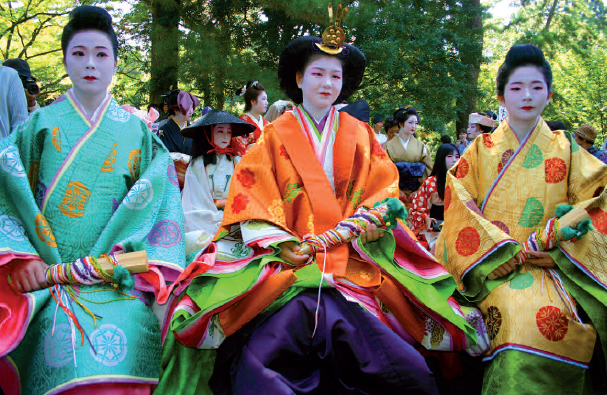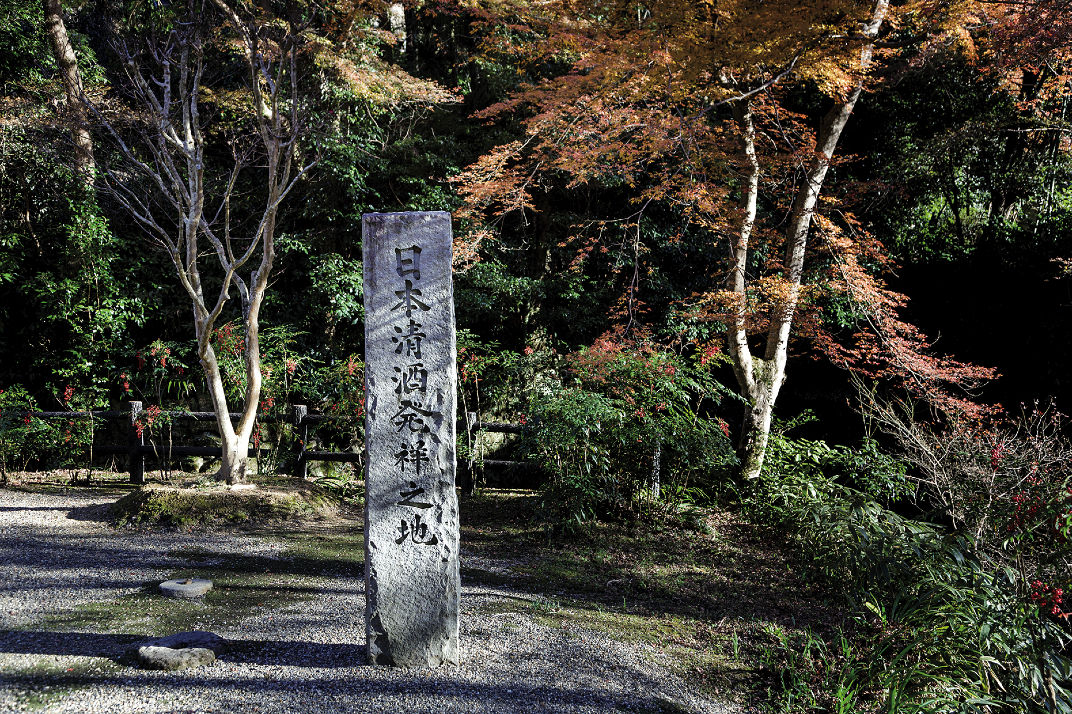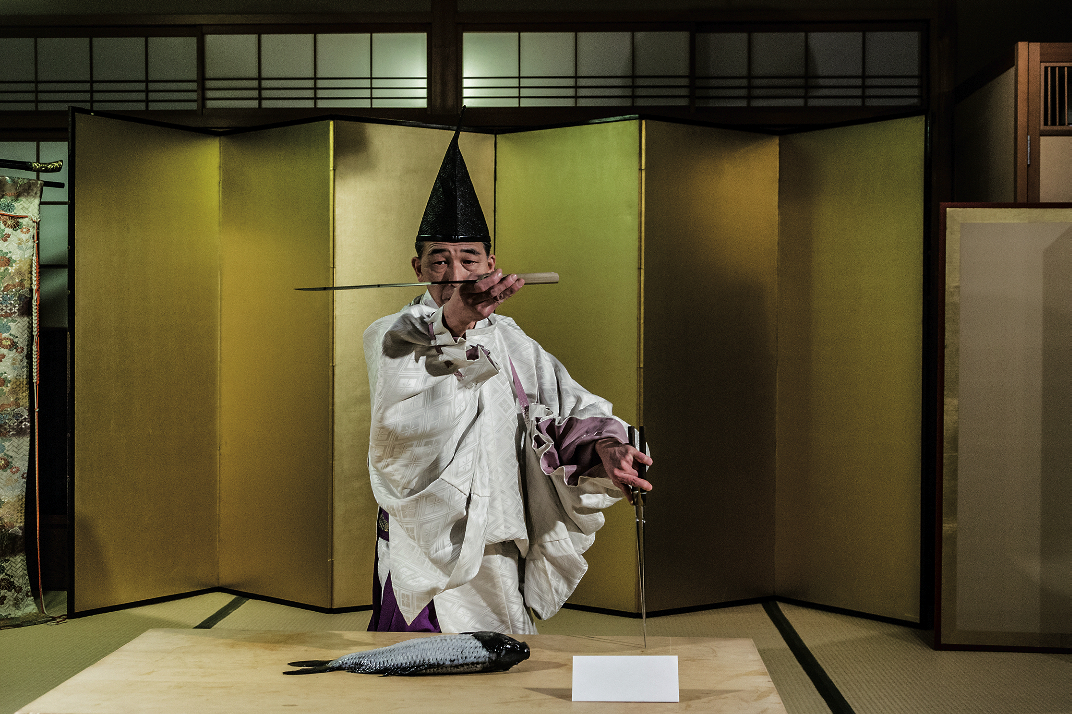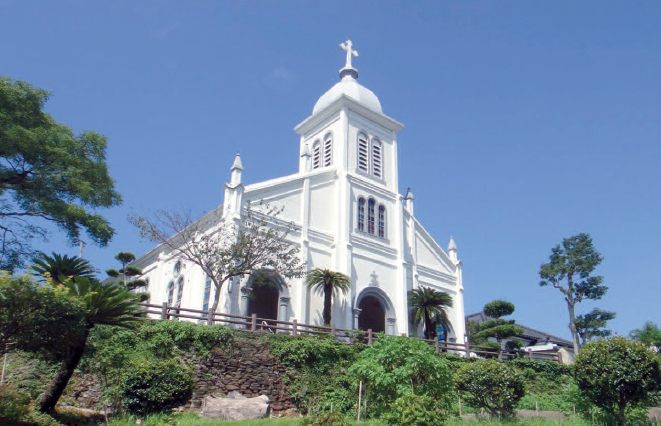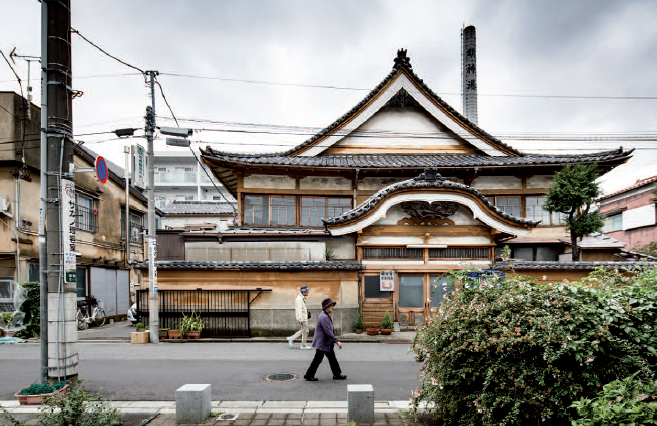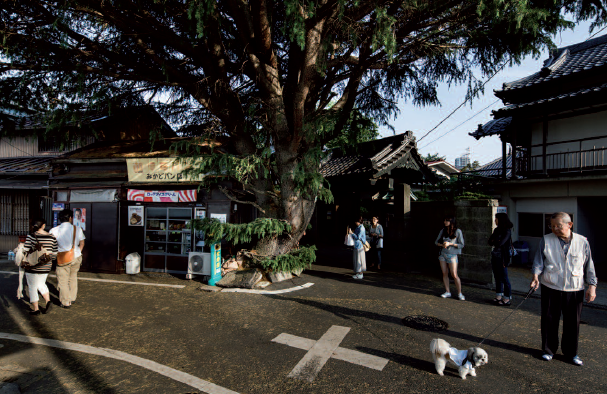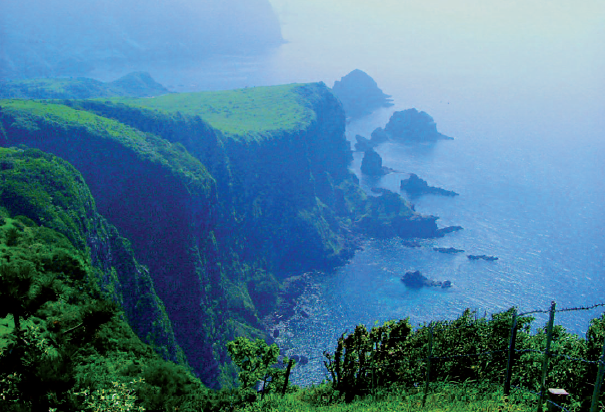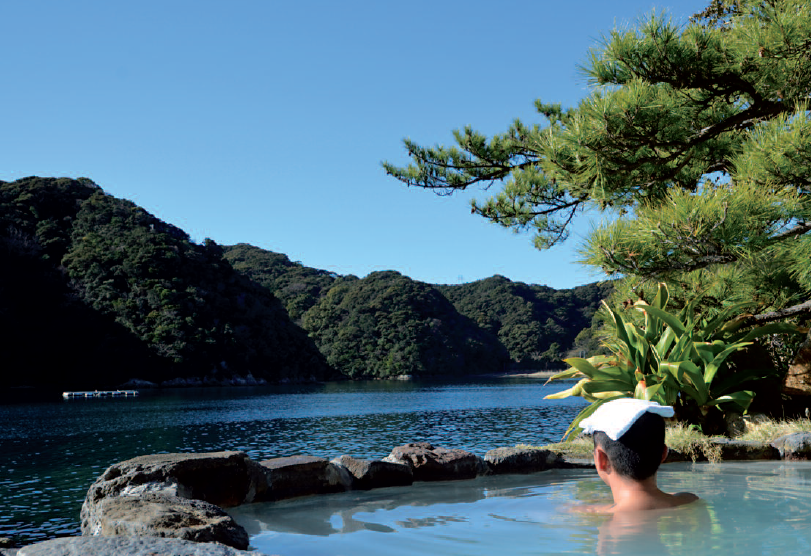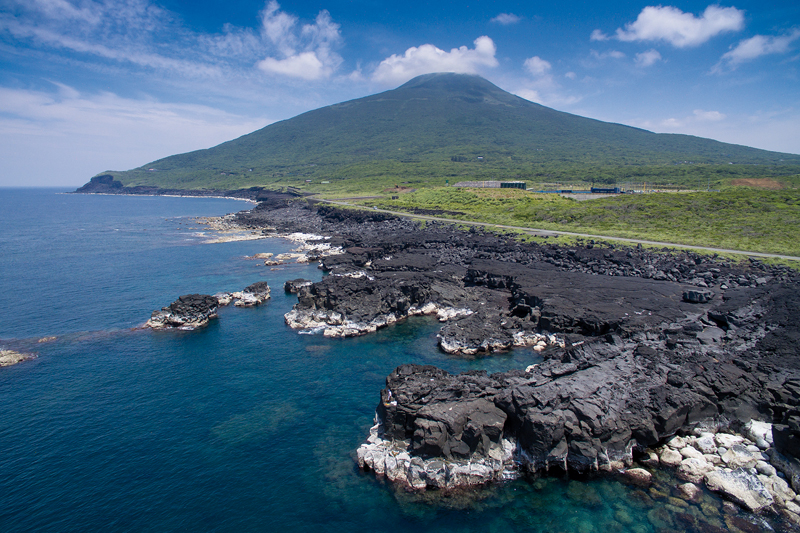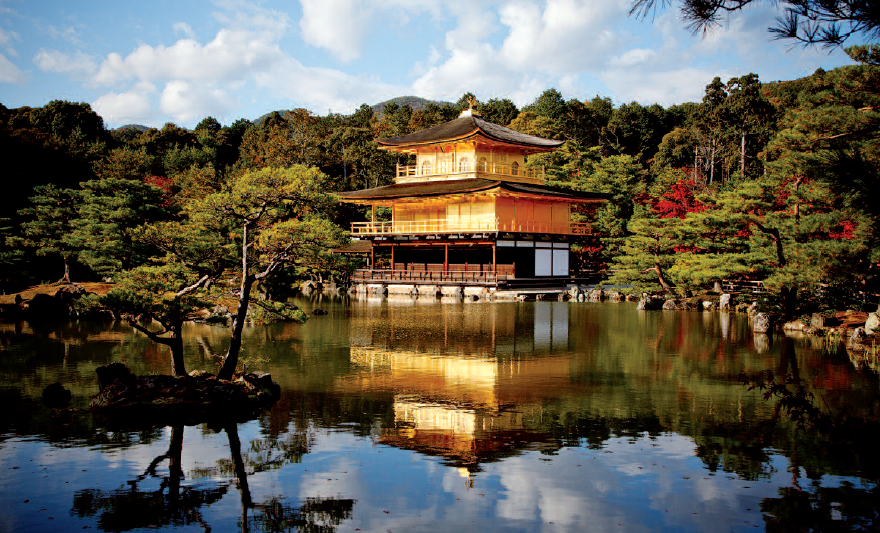
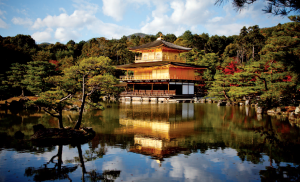 The ancient imperial capital welcomes visitors all year around, but autumn is the best time of year to visit, and this is why…
The ancient imperial capital welcomes visitors all year around, but autumn is the best time of year to visit, and this is why…
“I was there, standing near the “water mirror”, and the other side was bathed in light under the setting sun. The fishing pavilion on the left was half hidden. The pond, full of weeds and water plants, reflected the image of the Golden Pavilion perfectly, the reflection even more beautiful than the real thing. The rays of the setting sun played on the roof canopies, and were reflected back into the pond. Compared to the surrounding daylight, these flashes were too strong and dazzling; and just as in a painting with exaggerated perspective, the Golden Pavilion gave me the impression it was both stretching higher, and leaning backwards a little.” These few lines by Mishima Yukio in his famous novel, The Temple of the Golden Pavilion, illustrate the fascination the building holds for those who visit it. All you need to do is watch the great number of visitors who stand there every day, staring at it, in an attempt to understand the secrets of its beauty. At the start of Mishima’s novel, the hero says it is, “nothing more than an old, blackened and insignificant two storey construction,” but he very rapidly comes to understand that “nothing else in the world can compete with the beauty of the Golden Pavilion.” This building, completed in 1398, overlooks a pond called “the water mirror”, in which it is perfectly reflected all year round. However, in autumn its appearance is altered amidst the surrounding colours that range from yellow to bright red. Kyoto, the eternal city, is transformed at that time of year by the stunning changing colours that attract thousands of people. Throughout the city, the multicoloured leaves play in the autumn light, filtering it to put on a beautiful show for the awed visitors. We invite you to join us on this autumnal promenade, giving you time to calmly prepare for your next trip to Japan.
“Kyoto is the only city in the world where past and present overlap in such a natural way. In Tokyo, all the old locations have changed and are unrecognisable. Here, every stone, every tree, every sound, every animal has remained the same,” says a visitor who often travels to this city, which has been saved from the foolish human desire to constantly change everything.
“The creation of Kyoto required generations of aesthete emperors, architects, builders, gardeners, sculptors, poets, goldsmiths, lovers, enamellers, philosophers, town planners, craftsmen and artists, but from the very beginning Kyoto must have demonstrated such purity, such accomplishment that even the most unscrupulous warriors recoiled from destroying it,” wrote journalist Marcel Giuglaris in his book, Visa for Japan, published in 1958. Both these quotes describe the city perfectly and still apply today. When you step off the train in Kyoto on a beautiful autumn morning, into the railway station that has been completely renovated by the architect Hara Hiroshi, you should first choose to walk to the Golden Pavilion, before it is invaded by cohorts of tourists from around the world later on in the day. You cannot put a price on being the first to arrive and having the place to yourself. Perhaps, at that moment, you just might be touched by its grace. “Bit by bit it began to exist inside me, profoundly, and completely. It became difficult for me to recall any detail of the Pavilion without feeling the whole of my being vibrating,” says Mishima’s young hero about the building he will, nevertheless, end up destroying. In spite of all the crowds that gather there, the place always inspires respect. It is not only the building that draws your attention but the whole of its surroundings.
The red leaves (koyo), that the Japanese love as much as cherry tree blossom, will make your head spin. It is hard to know where to look; they are everywhere. Along the avenues, the maple trees stretch their reddening branches as if they want to block the way and are begging for attention. Amateur photographers need little persuasion, and snap away as though the trees are today’s film stars, while the Golden Pavilion finally disappears as you turn a corner. It is now time to leave this beautiful location for another temple, just as attractive at this time of year: Kiyomizu-dera. The easiest way to get there is by taxi, and with a bit of luck, you might have a driver who speaks a few words of English.
In Tokyo, it is often said that people in Kyoto are not very friendly, and treat tourists rather rudely. This is sometimes true with visitors from the capital, but the locals are charming to foreign tourists, and proud of the interest shown in their city by travellers from all over the world. It is just a question of minutes before you arrive at Kiyomizu-dera, the “Clear Water Temple”, a building that also includes a pagoda and a large raised terrace supported on pillars. It is a magical place to be in the autumn. In the afternoon, the light floods the leaves on the numerous maple trees in this truly magnificent location, and their glorious beauty attracts even more stares than the Golden Pavilion. “It’s the season during which they bloom. Not blossom made up of petals and corollas, but of leaves that turn to crimson. A flame, an explosion, a silent fire, slightly melancholic because its beauty isn’t found in the beauty of germination, but in shades of decomposition instead,” said the Italian Fosco Maraini in his Japanese travel notes published in the late ninteen fifties. He added, “Maybe this is why maple trees are so sacred to Buddhists, who always embrace the fragility of things, gathering together pictures of the world disintegrating with all the pain, on the threshold of emptiness. No other tree has such precisely defined leaves – mathematical, ineffable, hanging in the air like a veil -, such strength, such an intense scream of fiery colours.” You get all of this when you are introduced to Kiyomizudera on an autumn afternoon, when the sun shines on hundreds of trees that encircle the place like a raging fire, although there is no danger. The friendly atmosphere tempers the violence of the colours. People huddle on the terrace to catch a view of the city, hoping to capture a few beautiful red reflections with their cameras. Pictures of maple leaves are often used in camera advertisements, which are trying to say that if you were to buy such a camera, your pictures would be of a better quality because it captures the light better. The red leaves are transient, and that is why they are so popular in travel photo albums. Brother Enchin founded this temple in 798. It is also popular for its sacred waterfall, Otawa no taki, whose soothing waters encourage visitors to linger awhile among the trees. You need not rush, as time stops in this magical place.
Eventually it is time to leave, with regret, but also with a promise to return. It is pleasant to walk through the narrow streets, Ninenzaka and Sannenzaka, leading to the temple. Bordered with old houses that have been turned into all kinds of shops, these two streets have a particular charm all of their own. The shops are always well stocked and full of surprises, especially the ceramics shops. One must beware of the high prices though, even if what is on offer is hard to resist. There are quite a few middle school students around here on a school outings. They walk up and down the streets in little groups, on the lookout for foreign tourists to try out a few words of English, and ask them for their impressions of Kyoto and Japan.
It is a pleasant interlude before setting off again. Another fantastic place to see when the leaves are turning red and orange is Anraku-ji temple. It is situated halfway between Kiyomizu-dera and the Golden Pavilion, and it is only open to the public in the autumn. You will soon discover why on you way there. Not only does the sky look as though it is on fire, but the ground is also covered with red leaves, giving the impression it is in flames. It is impossible to remain unmoved when confronted with such splendour. Nature puts on an unforgettable show. She delivers a message that can be understood in many ways, but that cannot leave you indifferent. In these places, the reason why haikus were invented, many years before photography existed, seems clear: to be able to express a moment in just a few words.
The Irish writer Lafcadio Hearn said that poetry is “universal like the air,” that it, “was felt by all, read by all, and written by nearly all without any distinction of class or social condition.” The seasons are the main theme of these poems, and autumn naturally predominates. A walk through Kyoto is sufficient to convince you. Anrakuji temple has not only inspired poets, it also sheltered the philosopher Nishida Kitaro, one of Japan’s great wise men. You can walk in his footsteps by following the path that he used to take through these beautiful places. Near Anraku-ji is the Shinto sanctuary of Kumano Nyakuoji, established by the Emperor Goshirakawa in 1160. It is very popular during the last days of autumn when the trees above the building give the impression that it is burning. It is magnificent, and you cannot help but wonder if it influenced the founder of the Kyoto school of thought, a philosophical movement that tried to bring together Western philosophy with Oriental spirituality and traditions. If you continue walking, you will come across the Nanzen-ji temple with its own Zen garden, which must have held a particular interest for the philosopher. It is said that he practised Zen intensely and that it had a considerable influence on his thinking. Whether true or not, this Buddhist building is nevertheless still very beautiful in autumn. It is not too large, so you may feel a little less oppressed than in the other historical holy places. It is also interesting for its aqueduct, built during the end of the 19th century, that stands out from the older buildings. Situated in a wooded area, you can experience some spectacular moments near the temple in October and November, when the forest looks as though it has gone up flames. To conclude this philosophical journey, stop at Eikan-do, headquarters of the Buddhist sect of the pure Earth (jodo). At this time of year, this big building welcomes many visitors who walk through the gardens where the maple trees – yes, yet more maple trees – are putting on their show.
You have no choice but to enjoy the way they light up everywhere they are present. Professional artists could not do better, and if you have time to extend the experience with a night in the woods, go to Hoshinoya Kyoto (tel: 075-871-001). This tourist village is situated in the Arashiyama valley, 25 minutes away from Kyoto station by taxi, and it offers incredible services in amazing surroundings. You arrive after a short boat trip, which makes it all the more special. However you will pay top prices for the high standard of the services on offer, and can count on spending 60,000 yen per night. It is far from being cheap, for Kyoto can fire up our hearts, but equally, it can fire up its prices.
Odaira Namihei
Photo: Jérémie Souteyrat

